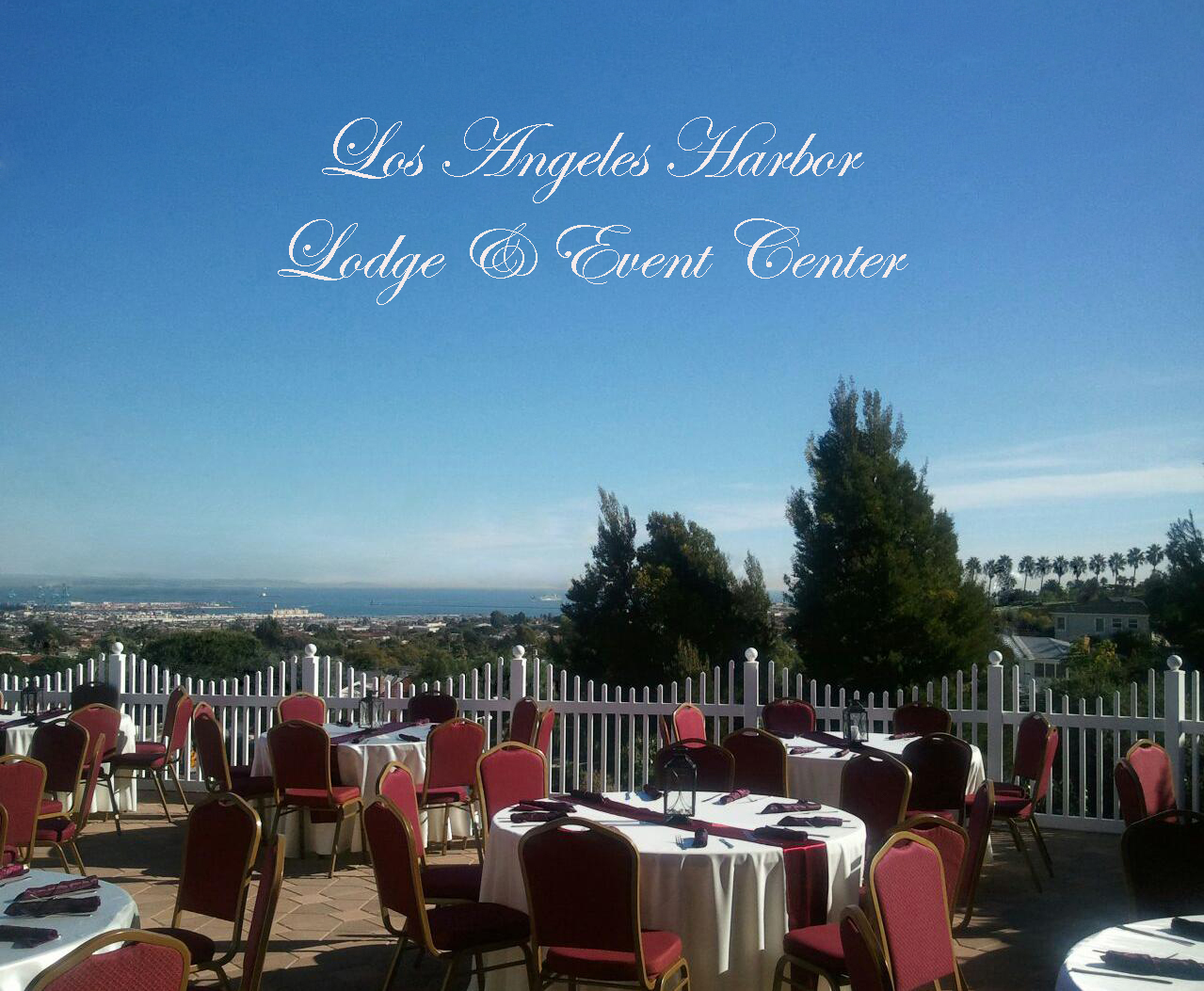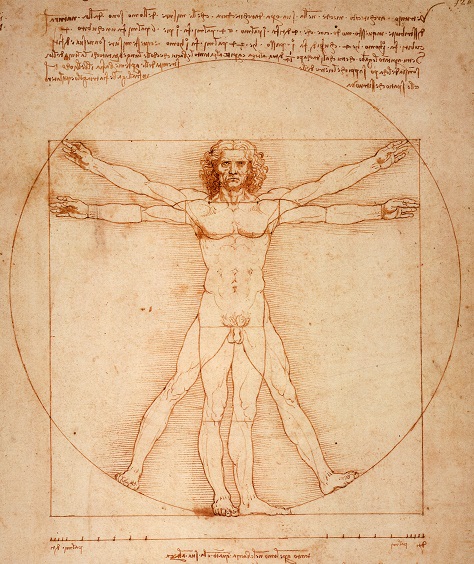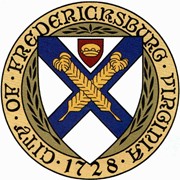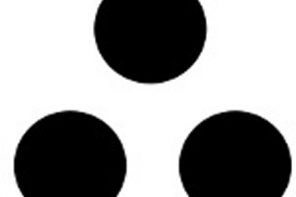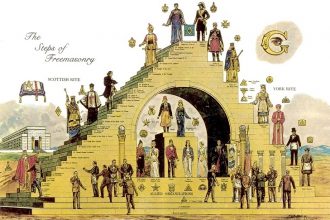Ancient Romans based designs of temples on proportions of the human body.
The design of Temples depends on symmetry, the rules of which Architects should be most careful to observe. Symmetry arises from proportion, which the Greeks call ἀναλογία. Proportion is a due adjustment of the size of the different parts to each other and to the whole; on this proper adjustment symmetry depends. Hence no building can be said to be well designed which wants symmetry and proportion. In truth they are as necessary to the beauty of a building as to that of a well formed human figure, which nature has so fashioned, that in the face, from the chin to the top of the forehead, or to the roots of the hair, is a tenth part of the height of the whole body. From the chin to the crown of the head is an eighth part of the whole height, and from the nape of the neck to the crown of the head the same. From the upper part of the breast to the roots of the hair a sixth; to the crown of the head a fourth. A third part of the height of the face is equal to that from the chin to under side of the nostrils, and thence to the middle of the eyebrows the same; from the last to the roots of the hair, where the forehead ends, the remaining third part. The length of the foot is a sixth part of the height of the body. The forearm a fourth part. The width of the breast a fourth part. Similarly have other members their due proportions, by attention to which the ancient Painters and Sculptors obtained so much reputation.
Just so the parts of Temples should correspond with each other, and with the whole. The navel is naturally placed in the center of the human body, and, if in a man lying with his face upward, and his hands and feet extended, from his navel as the center, a circle be described, it will touch his fingers and toes. It is not alone by a circle, that the human body is thus circumscribed, as may be seen by placing it within a square. For measuring from the feet to the crown of the head, and then across the arms fully extended, we find the latter measure equal to the former; so that lines at right angles to each other, enclosing the figure, will form a square.
If Nature, therefore, has made the human body so that the different members of it are measures of the whole, so the ancients have, with great propriety, determined that in all perfect works, each part should be some [proportional] part of the whole; and since they direct, that this be observed in all works, it must be most strictly attended to in temples of the gods, wherein the faults as well as the beauties remain to the end of time.
If it therefore appear, that numbers had their origin from the human body, and proportion is the result of a due adjustment of the different parts to each other, and to the whole, they are especially to be commended, who, in designing temples to the gods, so arrange the parts that the whole may harmonize in their proportions and symmetry.
by Marcus Vitruvius Pollio
Reprinted by kind permission from the Southern California Research Lodge’s “Fraternal Review.”
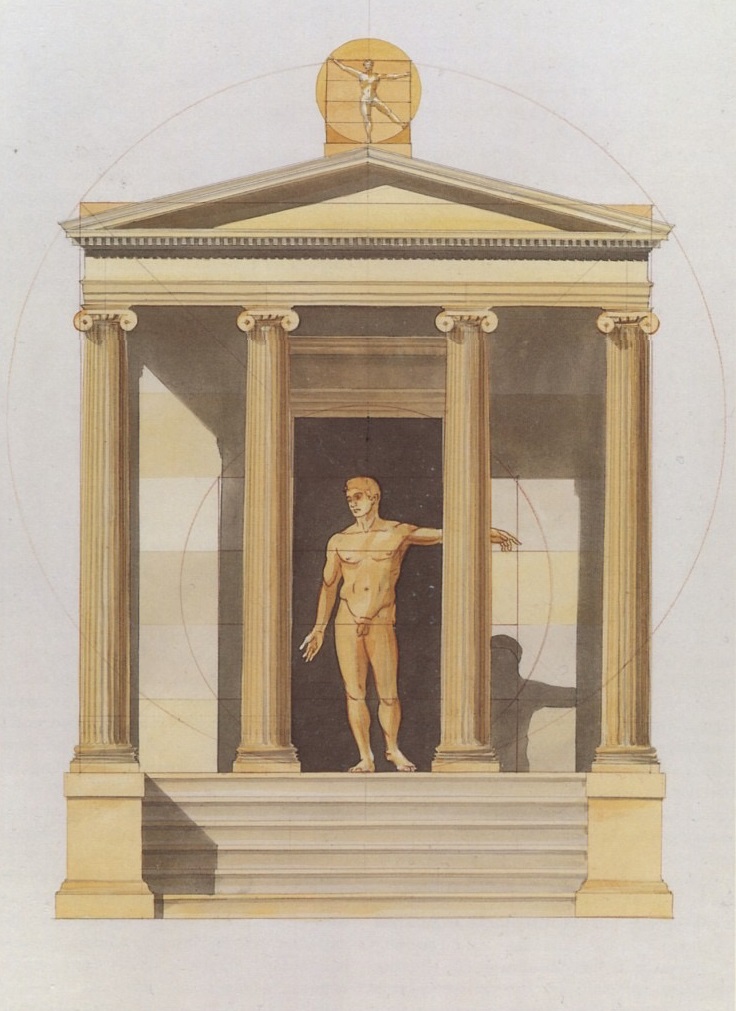
This excerpt is from writings of the famous Roman architect, Marcus Vitruvius Pollio, known as Vitruvius, who was in charge of building projects during the expansion of the Roman Empire under Augustus Caesar who reigned from 27 BCE to 14 CE.
